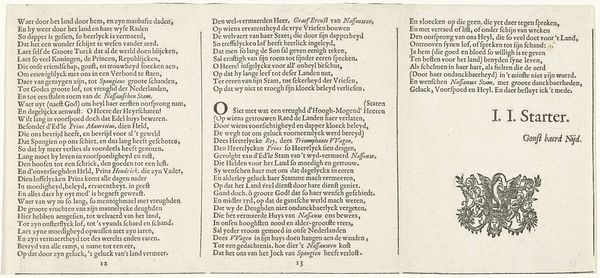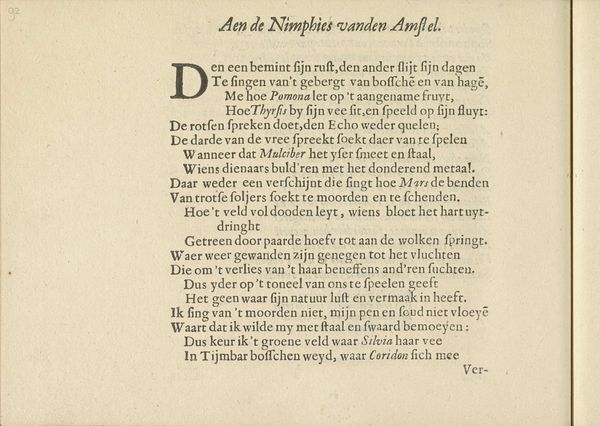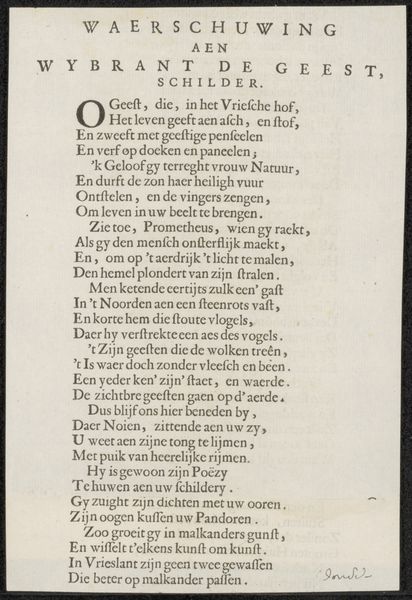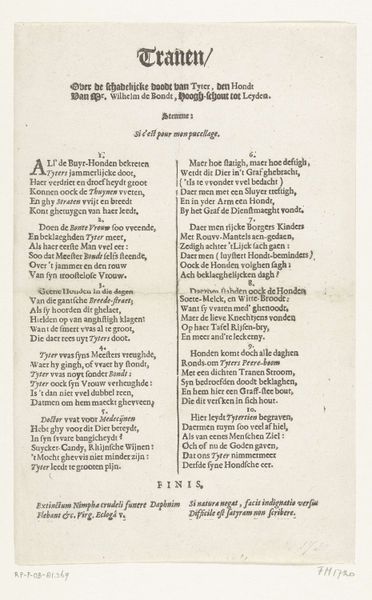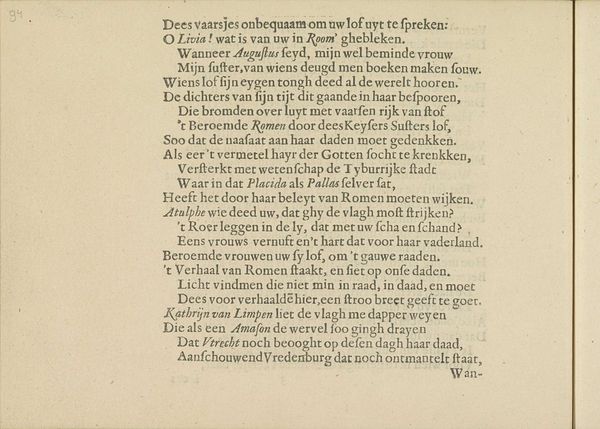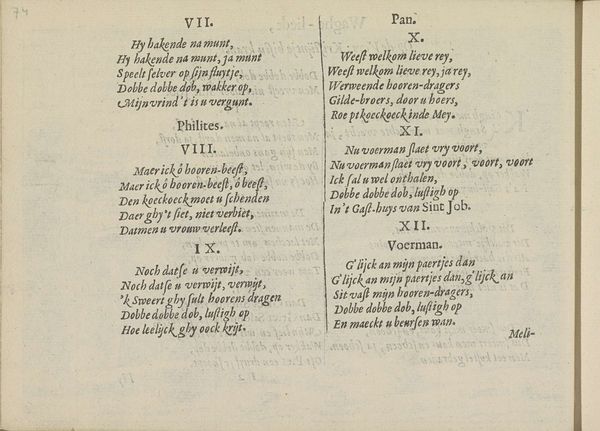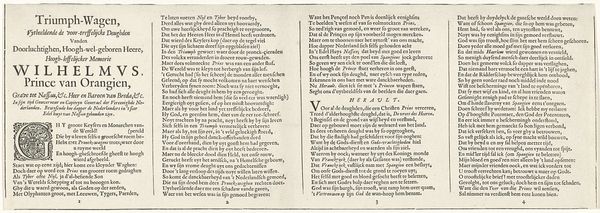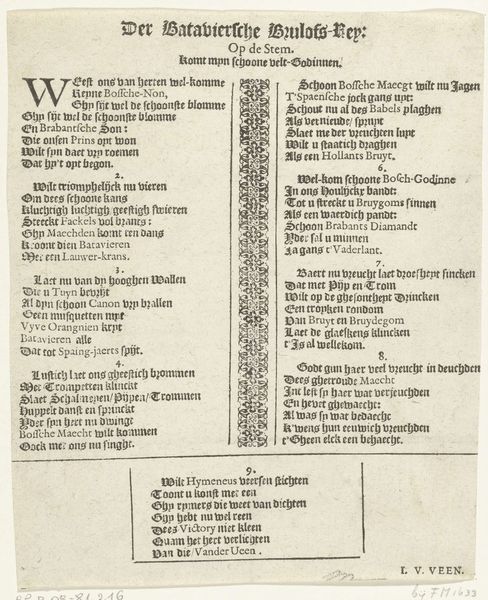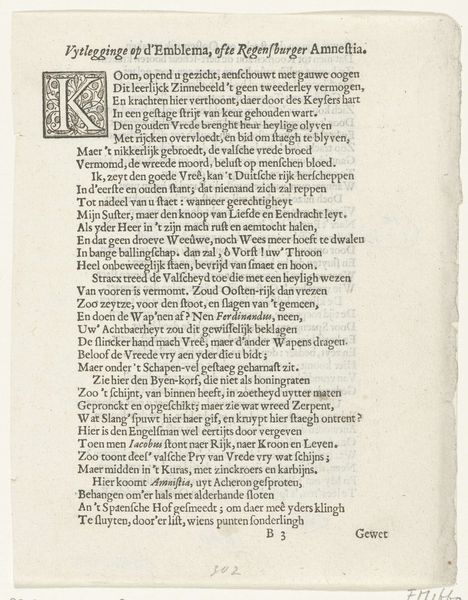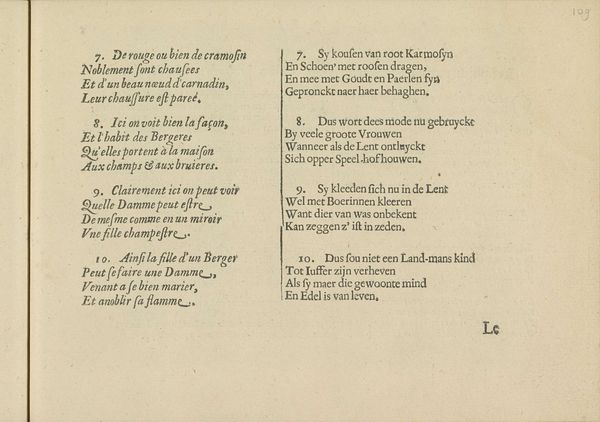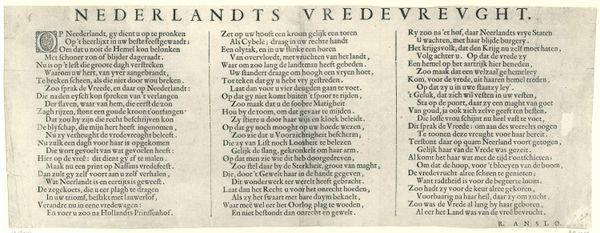
Tekstblad bij de prent van het droevig afscheid van Don de Calabassa uit Vlaanderen en terugkeer naar Spanje, 1646 1646
0:00
0:00
graphic-art, print, textile, typography
#
graphic-art
#
baroque
# print
#
textile
#
typography
Dimensions: height 146 mm, width 385 mm
Copyright: Rijks Museum: Open Domain
Curator: Here we have a broadside titled "Tekstblad bij de prent van het droevig afscheid van Don de Calabassa uit Vlaanderen en terugkeer naar Spanje, 1646," created in 1646. As a typographical print, it would have been produced rapidly. Editor: It looks like an early form of news! I'm curious, how do you approach something that's primarily text? Curator: It’s not *primarily* text, it’s primarily a print. I look at the conditions of production, which give rise to it. We might ask, for whom was this broadside created? Was it meant for the wealthy, who were literate, or was it read aloud in public spaces? Editor: So, the physical production and distribution mattered as much as the content? Curator: Precisely. Consider the paper itself: its quality, source, and how readily available it was. The printing process too – the typefaces, the press used. Was it mass-produced? What does that signify? What impact might this have on its value, both economically and socially? It is essentially an artifact of material culture that provides some fascinating insights into life in the 17th century. Editor: That makes sense. Seeing it as a produced object shifts my perspective. What else should I be aware of? Curator: Who would have had the skills and resources to produce it? Were they part of a guild? Where would it be sold and distributed, by whom, to whom? This gives insights into the contemporary textile and print industries of the time. Editor: Right. I hadn’t considered the labor involved, and now I see it opens the door to a much broader discussion. Curator: It speaks to the complex interplay between artistic expression, socio-economic conditions, and technological advancements. We tend to call something like this "graphic art", which removes it from the sphere of industrial printing, though clearly they were of the same piece. Editor: Thinking about the work, labor, and means of production gives the object an added richness. Thank you.
Comments
No comments
Be the first to comment and join the conversation on the ultimate creative platform.
